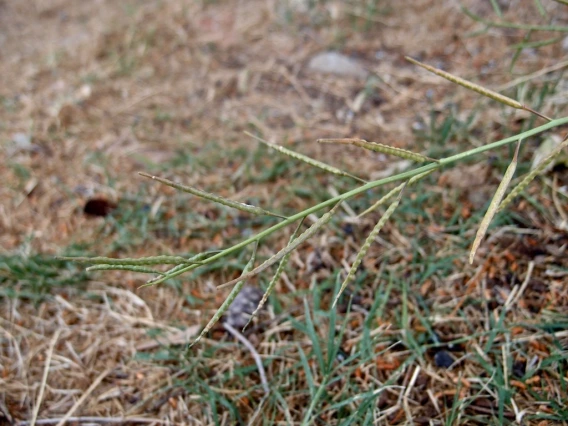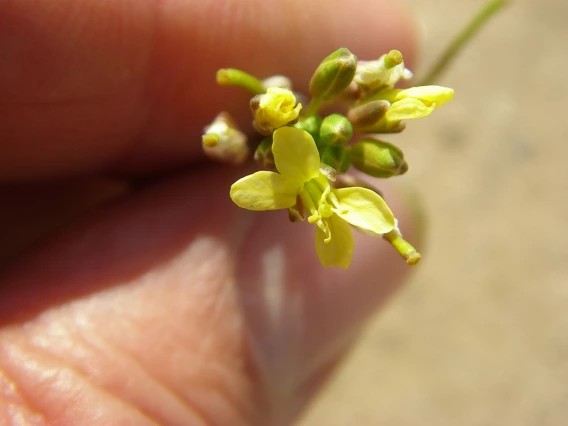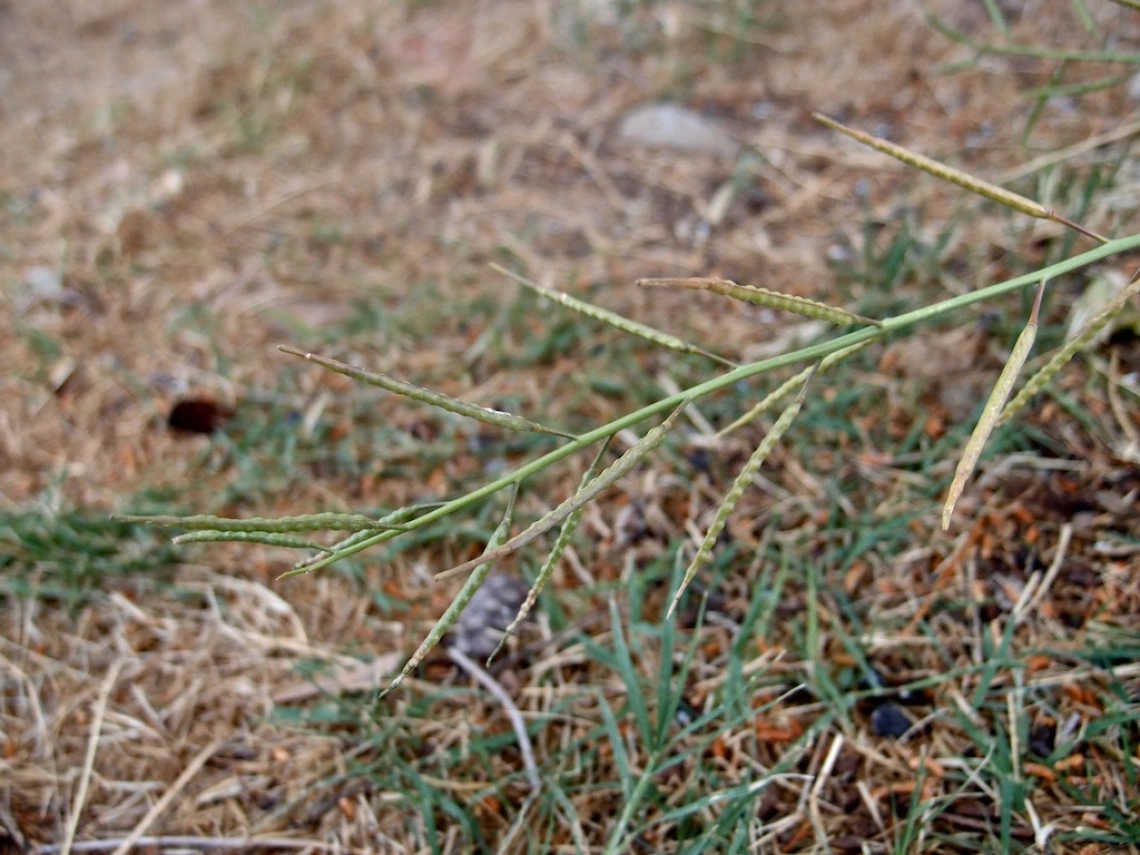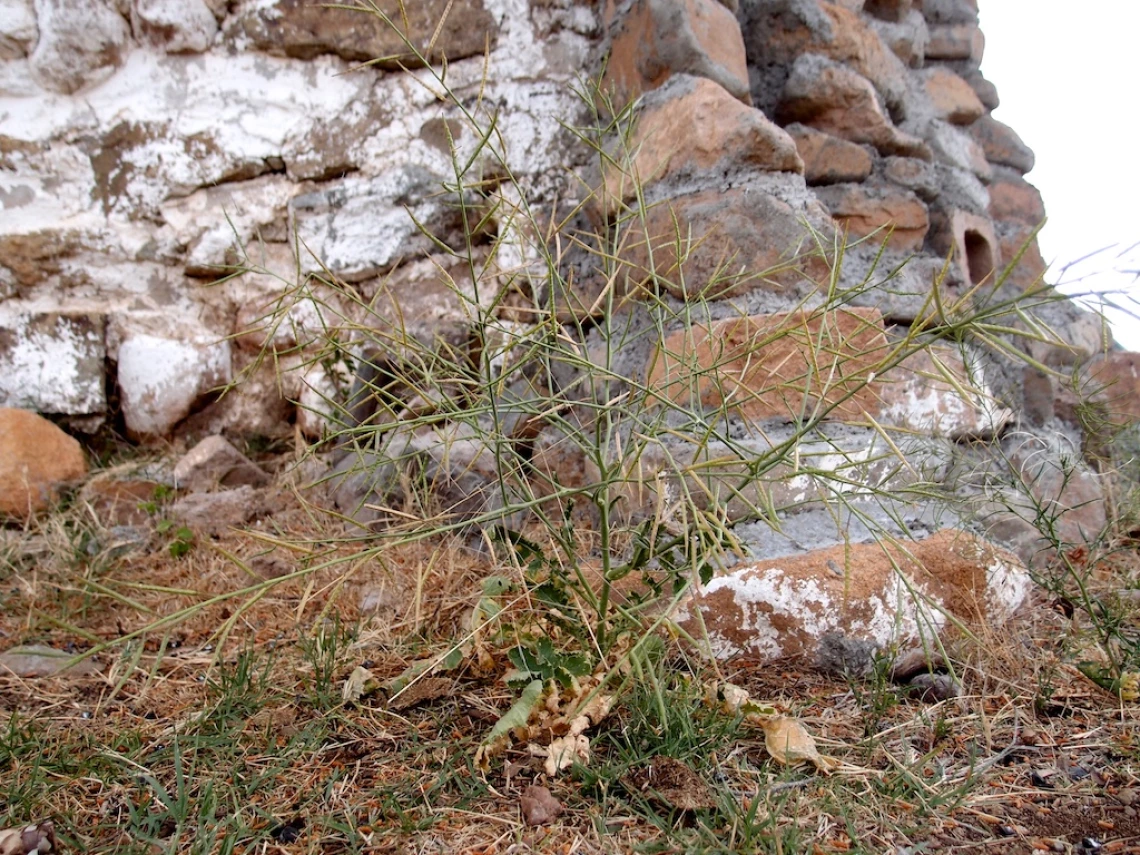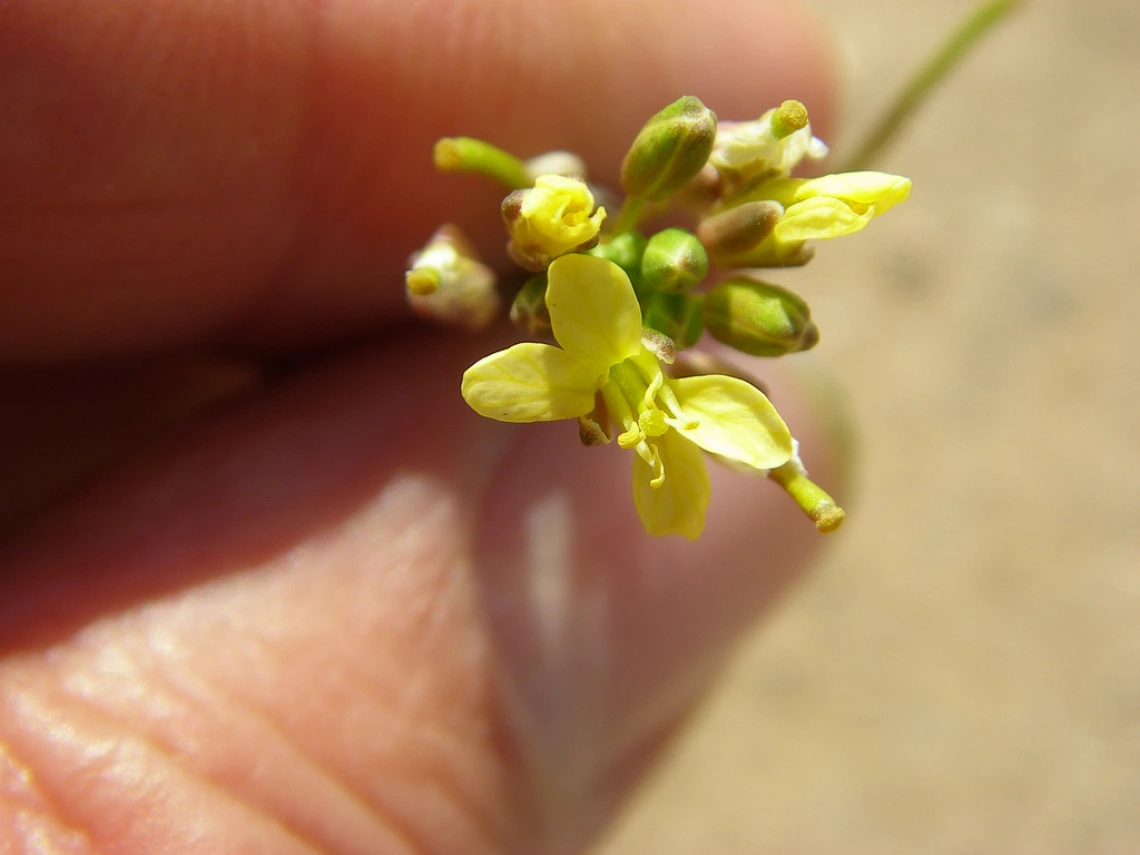Image

Gilbert
Common Name(s)
Sahara mustard
African mustard
Wild turnip
Mostaza del Sahara
Asian mustard
Pale cabbage
Scientific Name
Brassica tournefortii
Family
Mustard family (Brassicaceae)
Reasons for concern
Sahara mustard grows earlier than native species, quickly growing in dense patches that make it difficult for native species to grow. Dried Sahara mustard is highly flammable, increasing the number and intensity of fires.
Classification
Non-native
Botanical description
Leaves
Young plants have a basal rosette with hairy, divided leaves up to 3 feet wide
Stem(s)
2-3 feet. Nearly leafless, flowering, covered switch simple hairs
Flowers
Small, dull yellow, 2 petals on each side make a curves x shape
Seeds
Each flower produces a seed pod reddish brown to black with a viscous coating
Native to
Mediterranean
Where it grows
Disturbed areas like roadsides, lawns, rangelands, fields, riparian environments, industrial areas
Lifecycle
Winter annual
Reproduction
By seed
Weedy Characteristics
Mature plants can produce up to 9,000 seeds, which can germinate with only 1 ½ inches of water. Dried plants can break off from the ground and move like tumbleweed,
which furthers seed spread over long distances.
which furthers seed spread over long distances.
Control Strategies
For smaller infestations, manual removal is effective. Repeat treatments are necessary, often for years. Chemical herbicides should be applied before the flower stem grows.


